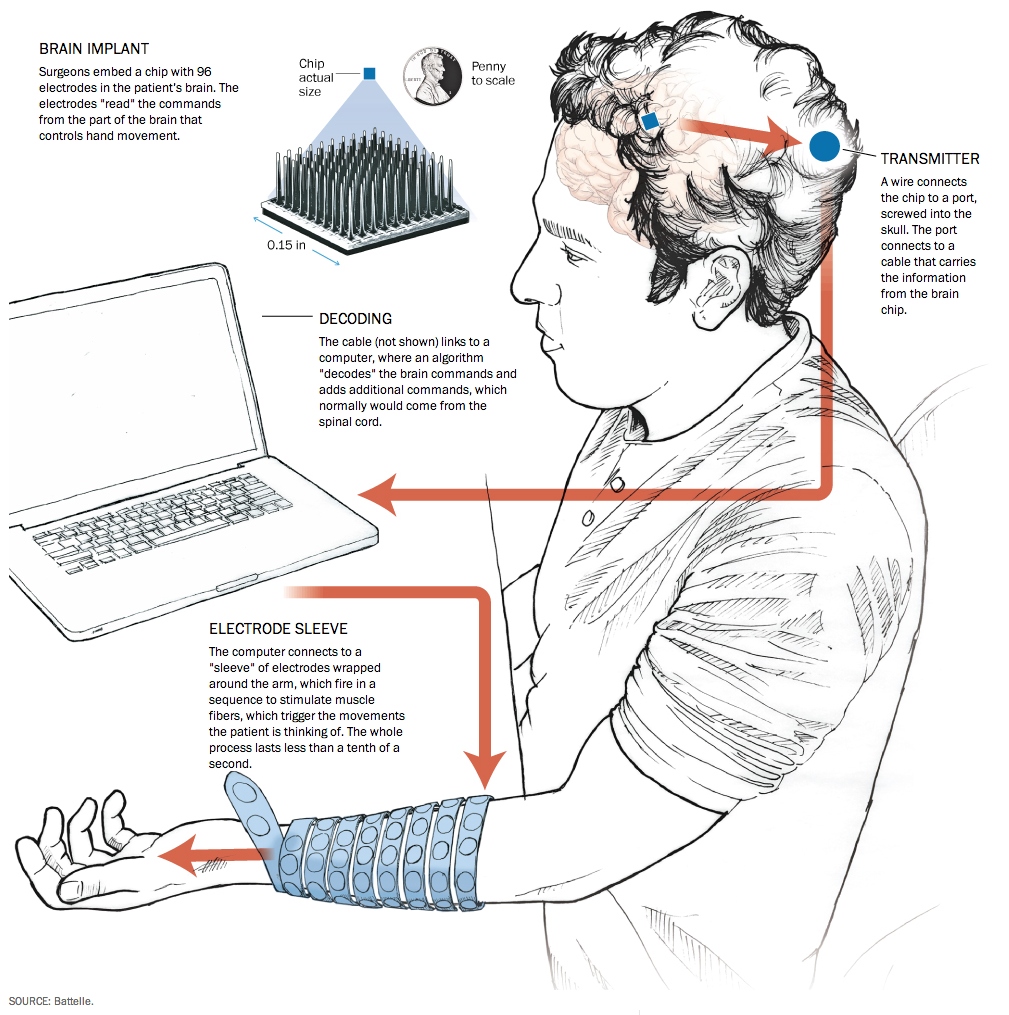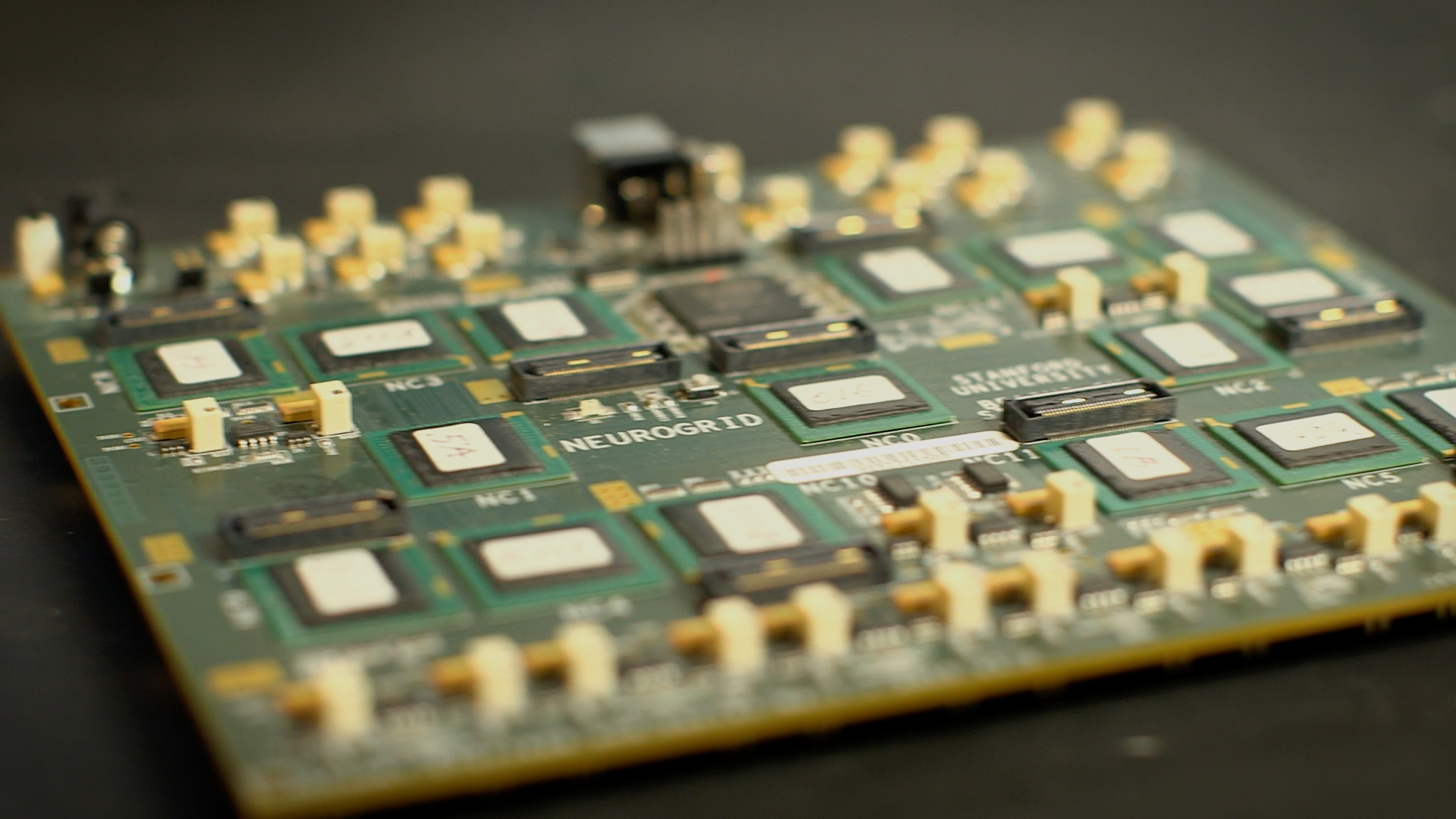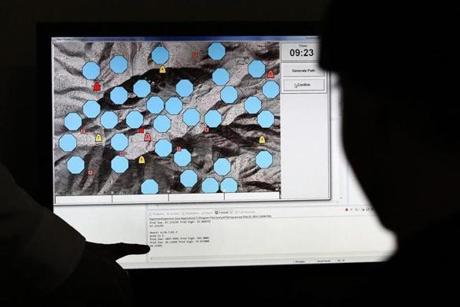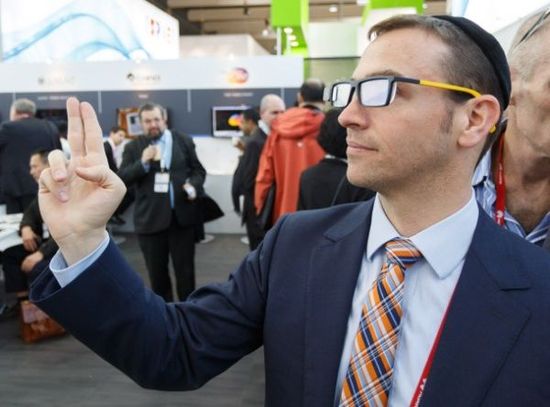Category: BCI
-

Israeli Make-a-thon empowers the disabled
TOM – Tikkun Olam Make-a-thon, is underway in Nazareth, Israel. In this Arab city, the hometown of Jesus, in an industrial complex built by Israeli Stef Wertheimer, makers, brain researchers, designers and physical therapists are empowering the disabled. Participants have 72 hours to build open source, affordable, working prototypes of devices and apparatus to improve…
-

Quadriplegic moves hand with thoughts
Neurobridge, developed by Ohio State University and Battelle, enabled a paralyzed man to move his hand and fingers with his thoughts. The device is an electronic neural bypass for spinal cord injuries that reconnects the brain directly to muscles, allowing voluntary and functional control of a paralyzed limb. The experiment used a chip, implanted in…
-

“Brain controlled” exoskeleton boosts limb power
“Hybrid Assistive Limb” or “HAL” is an exoskeleton by Cyberdyne that detects electrical pulses on the skin when one’s brain sends a “move” message to a limb. The robotic suit recognizes the intended motion, and then moves “naturally” with the arm or leg, providing additional power.
-

Paraplegic controls exoskeleton with mind, kicks off World Cup
As ApplySci predicted in January, Julian Pinto, a paraplegic, successfully kicked off the World Cup in Brazil this week. Pinto was aided by a mind-controlled exoskeleton created by Duke Professor Miguel Nicolelis and a team of 150 researchers involved in the Walk Again Project. They named the device the BRA-Santos Dumont, a combination of the three-letter…
-

“Neurotic Robots” mimic human brain function
UC Irvine professor Jeff Krichmar and colleagues are experimenting with robotic awareness and trying to teach mechanical brains to behave more like human and animal brains by programming traits that mimic obsessive-compulsive disorder or a fear of open spaces. Professor Krichmar presented his research this week at the IEEE International Conference on Robotics and Automation in Hong Kong.…
-

Brainflight project for BCI enabled flying
Professor Florian Holzapfel and colleagues at the Institute of Flight System Dynamics of the Technische Universität München have demonstrated the feasibility of flying via brain control. Brainwaves of the pilots are measured with EEG electrodes connected to a cap. An algorithm developed by Team PhyPa at the Berlin Institute of Technology deciphers electrical potentials and converts them into…
-

“Brain modeled” chip with prosthetic potential
Neurogrid is a “human brain based” microchip that is 9,000 times faster than and requires 1/40,000 the power of a typical pc. It is being developed by Professor Kwabena Boahen at Stanford University. The circuit board consists of 16 custom-designed “Neurocore” chips which can simulate 1 million neurons and billions of synaptic connections. Certain synapses were enabled…
-

Epidural stimulation enables paraplegic voluntary movement
University of Louisville researcher Claudia Angeli‘s recent paper details the process of electrical stimulation of the spinal cord enabling paralyzed patients to intentionally move their knees, ankles, and toes. The stimulation therapy involves implanting a 16-electrode array in the epidural space next to the outermost protective layer of the spinal cord. The array is connected to a pulse generator resembling…
-

BCI and robotic prosthetic paralympic competition
Switzerland will host the world’s first Cybathlon, an Olympic-style competition for parathletes using robotic assistive devices and brain computer interfaces. It will include six events: a bike race, leg race, wheelchair race, exoskeleton race, arm prosthetic race (including electrical muscle stimulation), and a Brain Computer Interface race for competitors with full paralysis. Unlike the Olympics, where athletes…
-

fNIRS headband measures boredom, fatigue, focus in air traffic control simulation
Tufts paper | Boston Globe Tufts professors Robert Jacob and Sergio Fantini are developing an fNIRS based headband to read brain activity, enabling a computer to determine whether the wearer is bored, fatigued, or sharp. They recently tested the method in an air traffic control simulation. With functional near infrared spectroscopy, a row of lights embedded in…
-

Facial expression controlled ear computer/health monitor
AFP | Japan Times Kazuhiro Taniguchi of Hiroshima City University has developed a 17 gram “Earclip-type Wearable PC” equipped with a GPS, compass, gyrosensor, battery, barometer, speaker and microphone. A microchip and data storage enable users to load software. The device is being tested now, with promising applications for the elderly and disabled. The system…
-

Lumus/EyeSight partnership to rival Google Glass
In an effort to compete with Google Glass, gesture control company EyeSight Mobile has partnered with smart glass company Lumus. The combination allows one to browse Facebook, play games, or control navigation instructions shown in a head-up display by holding out a finger to tap on icons or swipe away notifications. EyeSight plans to add the ability…